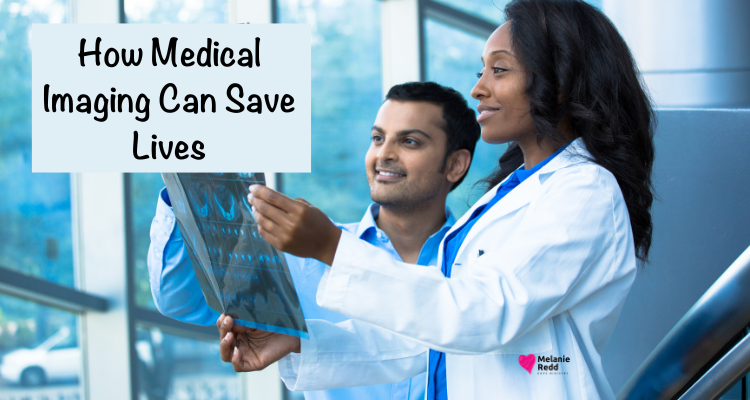How Medical Imaging Can Save Lives

How Medical Imaging Can Save Lives: Early Detection and Diagnosis
Medical imaging has revolutionized modern healthcare, offering critical insights into the human body that are essential for early detection and diagnosis of various conditions. This article explores the life-saving benefits of medical imaging, delving into its types, applications, and the future of this indispensable tool in healthcare.
Understanding Medical Imaging
What is Medical Imaging?
Medical imaging refers to techniques and processes used to create visual representations of the interior of a body for clinical analysis and medical intervention. These images of the body’s interior provide vital information for diagnosing, monitoring, and treating diseases.
As technology advances, medical imaging will continue to evolve, offering even more precise and non-invasive options for patients. Visit this website for the best body scan near you in Raleigh. Schedule an appointment now and get accurate results.
Types of Medical Imaging
X-Ray: One of the oldest and most commonly used forms of medical imaging. It uses ionizing radiation to create images of the bones and other structures inside the body.
MRI (Magnetic Resonance Imaging): Uses powerful magnets and radio waves to produce detailed images of organs and tissues.
CT (Computed Tomography): Combines X-ray images taken from different angles to create cross-sectional views of bones and soft tissues.
Ultrasound: Uses high-frequency sound waves to produce images of structures within the body. It is commonly used during pregnancy and for imaging soft tissues.
PET (Positron Emission Tomography): Often used in conjunction with CT scans, PET scans detect metabolic activity in tissues, making them useful for identifying cancerous cells and monitoring treatment progress.
Medical Imaging Role in Early Detection – Early Detection of Cancer
One of the most critical applications of medical imaging is in the early detection of cancer. Techniques like mammography, MRI, and PET scans can identify tumors at an early stage when they are most treatable. Early detection through imaging can significantly improve survival rates and treatment outcomes.
Cardiovascular Health
Medical imaging is essential for diagnosing and monitoring heart diseases. Techniques such as echocardiograms, CT angiography, and MRI can detect conditions like coronary artery disease, heart valve problems, and congenital heart defects early, allowing for timely intervention.
Neurological Conditions
Imaging technologies like MRI and CT scans are crucial for diagnosing neurological conditions such as stroke, multiple sclerosis, and brain tumors. Early detection through these imaging techniques can lead to better management and treatment of these disorders.
How Medical Imaging Saves Lives
Accurate Diagnosis: Medical imaging provides precise and detailed images that help healthcare providers make accurate diagnoses. By visualizing internal structures, doctors can identify abnormalities, understand the extent of a disease, and plan appropriate treatments.
Guiding Treatment Decisions
Imaging plays a vital role in treatment planning. For instance, in cancer treatment, imaging helps determine the size and location of a tumor, which is crucial for deciding on surgical approaches, radiation therapy, or chemotherapy. Similarly, in orthopedic surgery, imaging guides the placement of implants and the alignment of bones.
Monitoring Disease Progression
Medical imaging is invaluable for monitoring the progression of diseases and the effectiveness of treatments. Regular imaging allows doctors to track changes in the size of a tumor, the healing of fractures, or the improvement in blood flow after a cardiovascular procedure.
Advancements in Medical Imaging – Technological Innovations
Recent advancements in medical imaging technology have led to more accurate and less invasive imaging techniques. For example, 3D imaging and digital mammography provide clearer and more detailed images, improving diagnostic accuracy.
Artificial Intelligence
Artificial Intelligence (AI) is making significant strides in medical imaging. AI algorithms can analyze images quickly and accurately, identifying patterns and anomalies that might be missed by human eyes. This technology enhances diagnostic precision and speeds up the process, ensuring timely treatment.
Personalized Medicine
Medical imaging is a cornerstone of personalized medicine. By providing detailed images of an individual’s unique anatomy, imaging allows for tailored treatment plans that are specific to the patient’s condition and needs.
The Future of Medical Imaging – Portable Imaging Devices
The development of portable imaging devices is transforming healthcare delivery. These devices enable imaging in remote and underserved areas, improving access to diagnostic services and timely care.
Hybrid Imaging
Hybrid imaging combines different imaging modalities, such as PET-CT or PET-MRI, to provide more comprehensive diagnostic information. This approach enhances the accuracy and specificity of imaging, leading to better patient outcomes.
Non-Invasive Techniques – How Medical Imaging Can Save Lives
The trend towards non-invasive imaging techniques continues to grow. Innovations like optical coherence tomography (OCT) and elastography provide detailed images without the need for radiation or invasive procedures.
Medical imaging is a powerful tool that plays a crucial role in early detection and diagnosis, ultimately saving lives. By providing detailed insights into the body’s internal structures, imaging techniques enable accurate diagnosis, guide treatment decisions, and monitor disease progression.
By staying informed about the latest advancements in medical imaging and understanding its applications, individuals can take proactive steps toward better health and early disease detection.
Were you encouraged by what you read?
Then, would you share this article with a friend, co-worker, or family member?
Or, maybe you can send it to a friend or family member?
This blog occasionally uses affiliate links and may contain affiliate links.
Additionally, Melanie Redd is a participant in the Amazon Services LLC Associates Program.
This is an affiliate advertising program designed to provide a means for sites to earn advertising fees. These are earned by advertising and linking to amazon.com.
Also, for more on my disclosure policy, click HERE.
© Melanie Redd and Hope Ministry, 2024. Unauthorized use and/or duplication of this material without express and written permission from this blog’s author and/or owner is strictly prohibited.
Further, excerpts and links may be used, provided that full and clear credit is given to Melanie Redd and Hope Ministry.
Please give appropriate and specific directions to the original content.



0 Comments